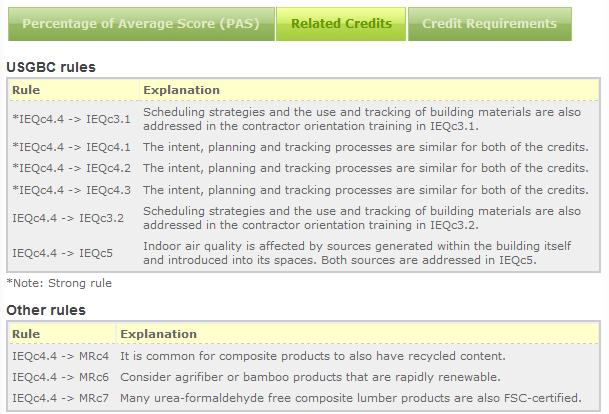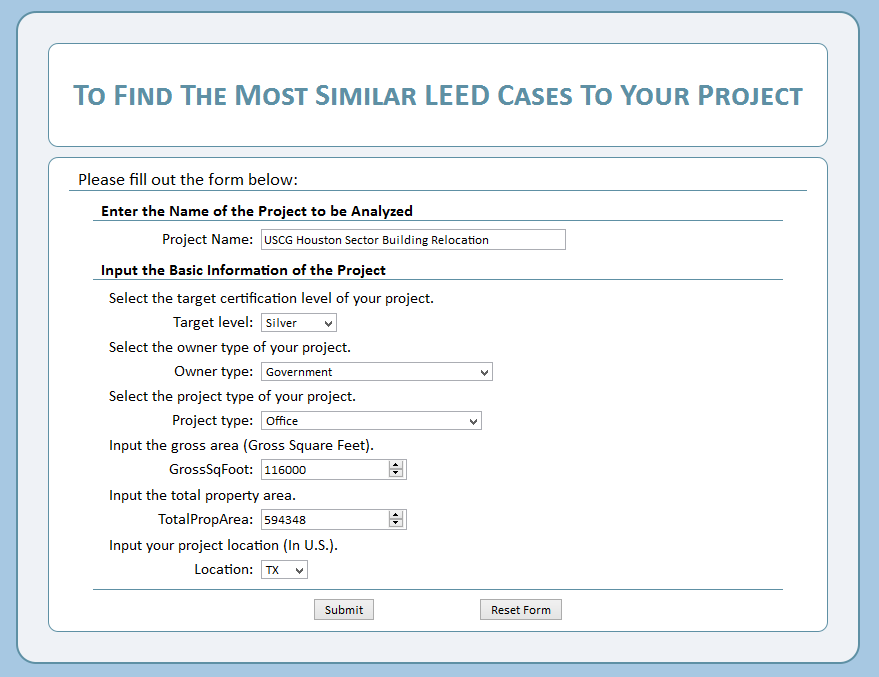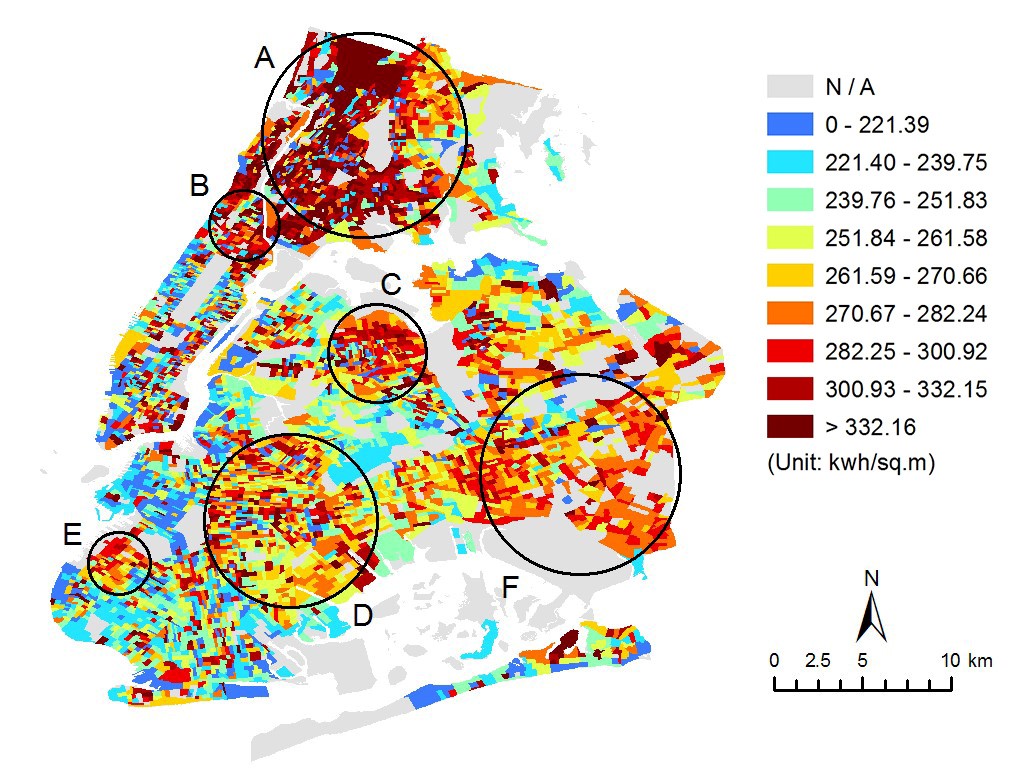Findings
Related LEED Credits
In order to give LEED managers a better understanding of LEED credits and therefore help them design their target credits better, this study conducted an analysis on the credits in LEED NC v2009 from two perspectives: (1) the analysis of the achievement of individual credits, and (2) the analysis of the achievement of two related credits. The results of the first part showed that credits like MRc6 (Rapidly Renewable Materials) and MRc3 (Materials Reuse) are very rare and difficult to achieve, whereas credits like EAc1 (Optimize Energy Performance) and EAc2 (On-Site Renewable Energy) demand lots of additional effort or cost for higher points. The second part of the study identified 50 strong USGBC rules and 13 new pairs of related credits. A web tool was also developed at the end to better present the results of this study.

A Non-linear Case-based Reasoning System
This study proposed an Aritificial Neural Network based non-linear Case-based Reasoning approach to suggest a list of target credits for new LEED projects based on similar certified cases, of which the detail case studies can also be provided. The proposed approach was tested and evaluated using 20 recently certified projects. The result showed a prediction accuracy of 80.75% on the LEED credit selection. The result was also compared with those calculated by commonly used linear CBR approaches: Multiple Regression Analysis, Correlation Analysis, and the k-NN approach. The accuracy calculated by these methods were between 71.23% - 77.54%, which were lower than the proposed approach.

Relationship between LEED Credits and Climate
This study investigated the relationship between climate factors and LEED credits using data mining techniques. The results show that the achievement of some credits such as SSc4 - Alternative Commuting Transportation and SSc7.1 - Heat Island Reduction – Non-roof are highly related to climate factors especially the diurnal temperature range. The achievement of other credits like SSc6 - Stormwater Quantity Control, WEc3 - Water Efficient Landscaping, SSc2 - Building Exterior and Hardscape Management Plan, SSc7.2 - Heat Island Effect – Roof and IEQc2.3 - Occupant Comfort – Thermal Comfort Monitoring also reveal directionly relationship with climate factors.

Numerical Patterns behind Leading Green Building Markets
This study explored the numerical patterns behind the leading counties in the U.S. local green building markets and the implications of the patterns on China. 39 important local green builidng markets in the U.S. are identified using DBSCAN algorithm. Results showing that economic features like the total personal income in the real estate market, and educational features like the number of college students can be important features for the identification of potential leading markets for green buildings. The identified optimal patterns were also implemented in the biggest developing country, China, and 20 potential leading prefecture-level cities in Chinese green building markets were suggested as the focus of development.

Influential Features on the Energy Use Intensity
This study implemented the non-linear machine learning algorithm, Random Forests, to analyze the influential features of the regional average site EUI of multi-family residential building in NYC. The AEUI of 1,322 BGs were prepared based on 3,608 multi-family residential buildings in NYC. 171 influential features describing the buildings, economy, education, environment, households, surrounding, and transportation were collected to model the AEUI. The top 20 influential were identified based on the out-of-bag estimation in RF. The results show that features like the percentage of higher educated people, percentage of households heated by fuel oil, and median household income, significantly affect the regression model. Related suggestions on improving the energy performance in different regions are presented to the local government.
